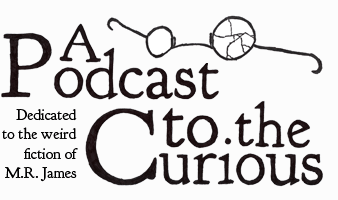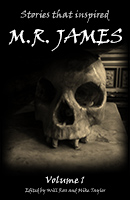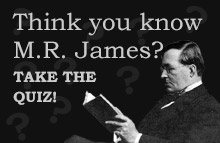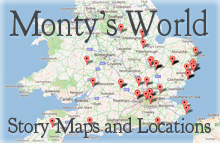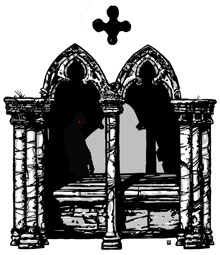
This episode Will & Mike slip into their cassocks, whip out their prayerbooks and head down to Southminster for ‘An Episode of Cathedral History’ by M.R. James.
Questions answered in this episode:
– When is a vampire not a vampire?
– Do Lamia have hairy legs?
– What length of skirt do Mike and Will wear?
Big thanks go out to Roger Burton West who provided the readings, and Alisdair Wood for the awesome custom illustration on the right!
Show notes
- The Mystery of Edwin Drood by Charles Dickens (wikipedia)
This story refers twice to characters in Dickens’s famously unfinished novel ‘The Mystery of Edwin Drood’.
- Rochester Cathedral (Monty’s World)
There are various suggestions in the story that M.R. James may have had Rochester Cathedral in mind while writing this story.
- Isaiah 34:14 (bible.cc)
This website illustrated quite how much the Isaiah quote which appears in this story differs from one translation to another!
- Lamia & Satyr (wikipedia)
The latin quotes in this story make reference to two creatures from Greek Mythology, the Lamia and the Satyr.
- The Demon in the Cathedral by Rosemary Pardoe (Ghosts & Scholars)
Apparently the plot of this story was used as part of a hoax played on Fate magazine in 1977!
- The Lamia and the Screech-owl by Peter Bell (Ghosts & Scholars)
This essay examines ‘An Episode of Cathedral History’ and discusses the mythical creatures mentioned in the story.
- Charles Simeon (wikipedia)
This story refers to ‘Simeon’s Lot’, a reference to the English evangelical preacher Charles Simeon, who James’s own father was a follower of.
- Patrick J Murphy (Miami University) & Fred Porcheddu (Denison University)
Patrick and Fred are two American academics who are conducting research into the medaevalist and antiquarian background of M.R. James’s stories.
- Warnings to the Curious (Amazon.co.uk)
During this episode we mention various essays which are featured in this book, including essays by Michael A. Mason, Jacqueline Simpson
- A Pleasing Terror (Amazon.co.uk)
The excellent footnotes on this story in the ‘A Pleasing Terror’ ebook were of great help to us when researching this story.
- Speaker Lenthall’s Tomb (Ghosts & Scholars)
The unfinished James tale dubbed by Rosemary Pardie ‘Speaker Lenthall’s Tomb’ bears some striking similarities to ‘An Episode of Cathedral History’.
- The Gothic Revival (Wikipedia)
It is an understatement to say that M.R. James was not a big fan of the architectural changes undertaken in British churches in the name of the gothic revival during the 18th and 19th century.

Podcast: Play in new window | Download
Subscribe:
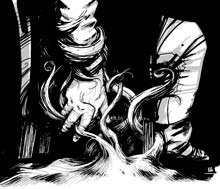 This episode Mike and Will recoil in horror from some fearsome home furnishings in ‘The Diary of Mr Poynter’ by M.R. James.
This episode Mike and Will recoil in horror from some fearsome home furnishings in ‘The Diary of Mr Poynter’ by M.R. James.
Big thanks to our reader for this episode, the mighty Paul Maclean (@ysdc on Twitter). You may know Paul from the ‘Call of Cthulhu’ RPG hub Yog-Sothoth.com and it’s Lovecraftian publishing wing InnsmouthHouse.com. He is also one of the presenters of the News from Pnakotus and The Silver Lodge podcasts, both required listening for weird fiction and RPG fans!
Also big thanks to Alisdair Wood, the massively talented artist who provided us with the awesome specially-created ‘Diary of Mr Poynter’ artwork you can see above. You can find more exciting James-inspired artwork at Alisdair Wood’s website.
Show notes:
- Rendcomb Manor, Gloucestershire (Monty’s World)
While in the story Rendcomb Manor is said to be in Warwickshire, the real Rendcomb Manor is in Gloucestershire. Now home to Rendcomb College, it is not clear if James had this ancient estate in mind when he wrote the story.
- Anti-vivisection movement and the Brown Dog Affair (Wikipedia)
Miss Denton is an advocate of the Anti-vivisection moment, which was gathering momentum in the decade before this story was published.
- William Poynter, Bishop (Wikipedia)
M.R. James borrowed the name of his diarist from an English bishop who published various religious tracts during the early 19th century.
- Dr Arthur Charlett, University College Oxford (Wikisource)
Mr Poynter’s diary states that the famously hirsute (and presumably fictional) Everard Charlett was of the same family as Dr Arthur Charlett, who was Master of University College Oxford for 30 years until his death in 1722.
- Thomas Hearne, Antiquarian (Wikipedia)
James mentions in the story that William Poynter argued with English antiquarian Thomas Hearne (1678 – 1735).
- Dr Robert Plot, Naturalist (Wikipedia)
Mr Poynter’s diary suggests that there may be precedents for the strange death of Everard Charlett to be found in the work of Robert Plot. Plot English naturalist whose works mentioned strange natural phenomena such as the ‘double sunset’ at Leek in Staffordshire, a giants femur bone etc.
- Feast of St Jude and St Simon (CatholicCulture.org)
James mentions that the curtains are finally delivered on the Feast of St Jude and St Simon, the 28th October. In his book Suffolk and Norfolk M.R. James notes that stained glass images of Jude and Simon can be found in the parish church at Denton in Norfolk, although his use of this as a name for his protagonist could be a coincidence!
- Thomas Philips, Antiquarian (Wikipedia)
M.R. James mentions in the story that prior to purchase by James Denton, Mr Poynter’s diary was part of the ‘famous Thomas collection’ of manuscripts. Thomas Philips was an antiquarian and obsessive book collector who left a collection of around 100,000 books and manuscripts at the time of his death in 1872 which were auctioned off over a number of years.
- Ghosts and Scholars postcard (Ghosts & Scholars Website)
Ghosts and Scholars are selling this rather scary bookmark featuring an image of Everard Charlett’s hairy coffin!
- Shakespeare authorship question (Wikipedia)
In the story Mr Cattell makes a reference to ‘Hercules and the painted cloth’, which Rosemary Pardoe suggests may be a hint towards the argument/conspiracy theory that someone else may have written Shakespeare’s works.
- The Yellow Wallpaper by Charlotte Perkin Gilman (Wikipedia)
There are parallels between this story and the short story ‘The Yellow Wallpaper’ by American Writer Charlotte Perkins Gilman which was published in 1892. This story was also recently examined in detail by the HPPodcraft.
- Game of Bear Story Competition (thesuffolkcoast.co.uk)
Suffolk Coast are running a competition for under 16’s to write an ending for M.R. James’s unfinished story Game of Bear. Closing date is 1st November, the winner will be selected by author Susan Hill.

Podcast: Play in new window | Download
Subscribe:
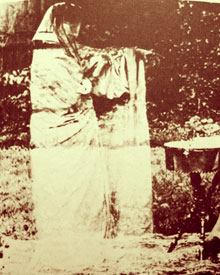 Mike is off on his honeymoon at the moment, so in lieu of a full episode Will provides a reading of and short commentary on an M.R. James essay ‘Ghosts – Treat them Gently!‘ which was originally published in the Evening News on 17 April 1931.
Mike is off on his honeymoon at the moment, so in lieu of a full episode Will provides a reading of and short commentary on an M.R. James essay ‘Ghosts – Treat them Gently!‘ which was originally published in the Evening News on 17 April 1931.
In the essay Monty talks about what ingredients he thinks go to make up a really successful ghost story, and gives an insight into the supernatural fiction he rates most highly.
Links
Podcast: Play in new window | Download
Subscribe:
